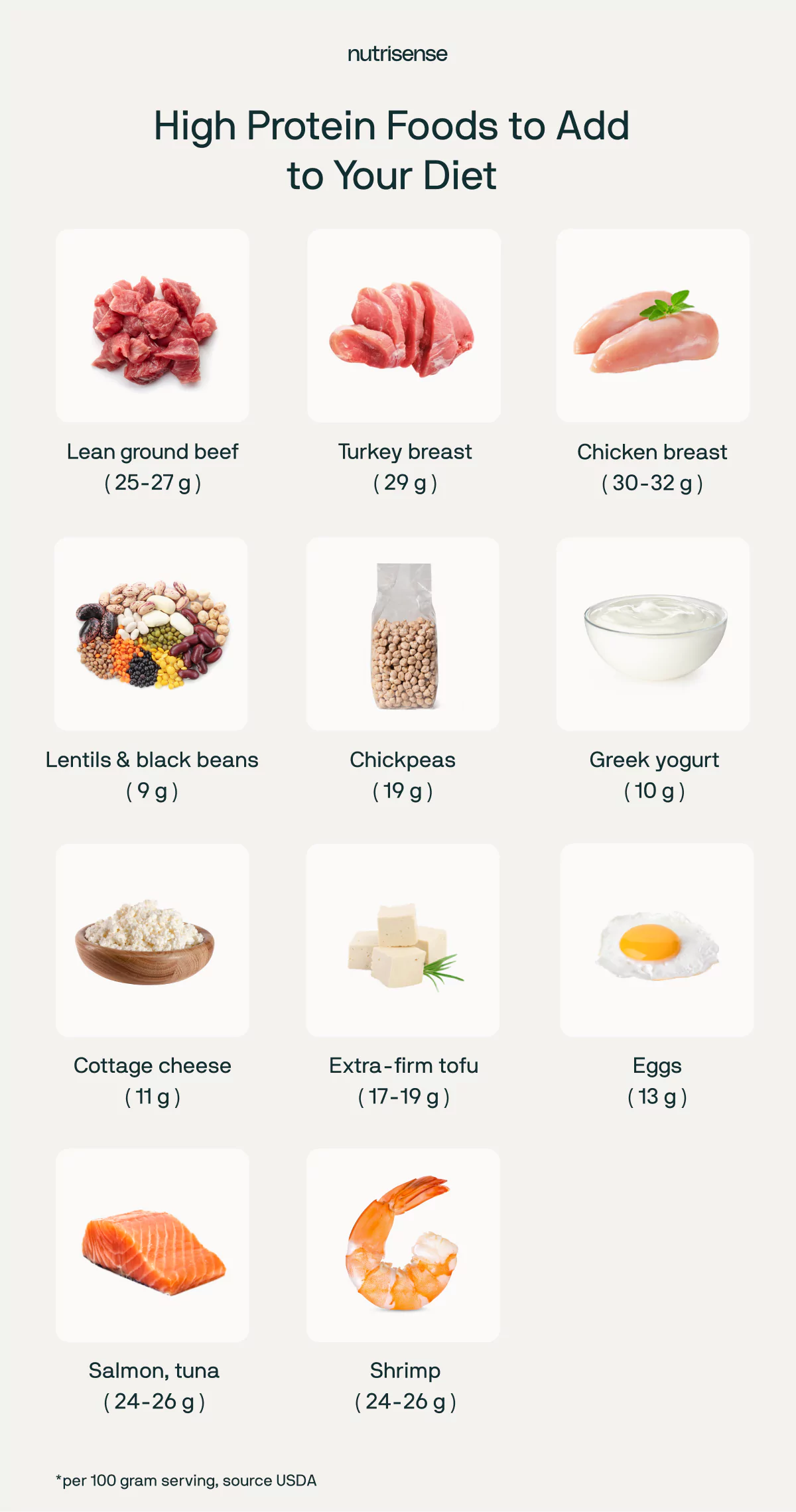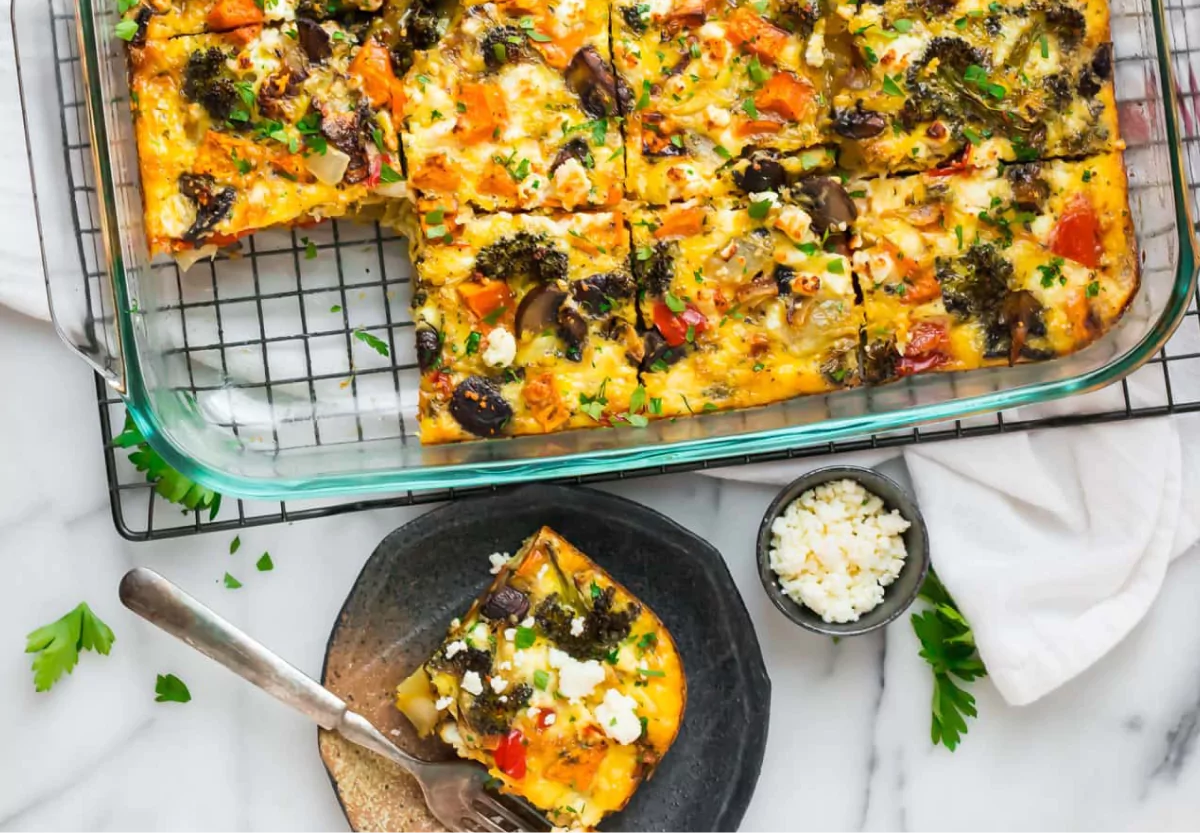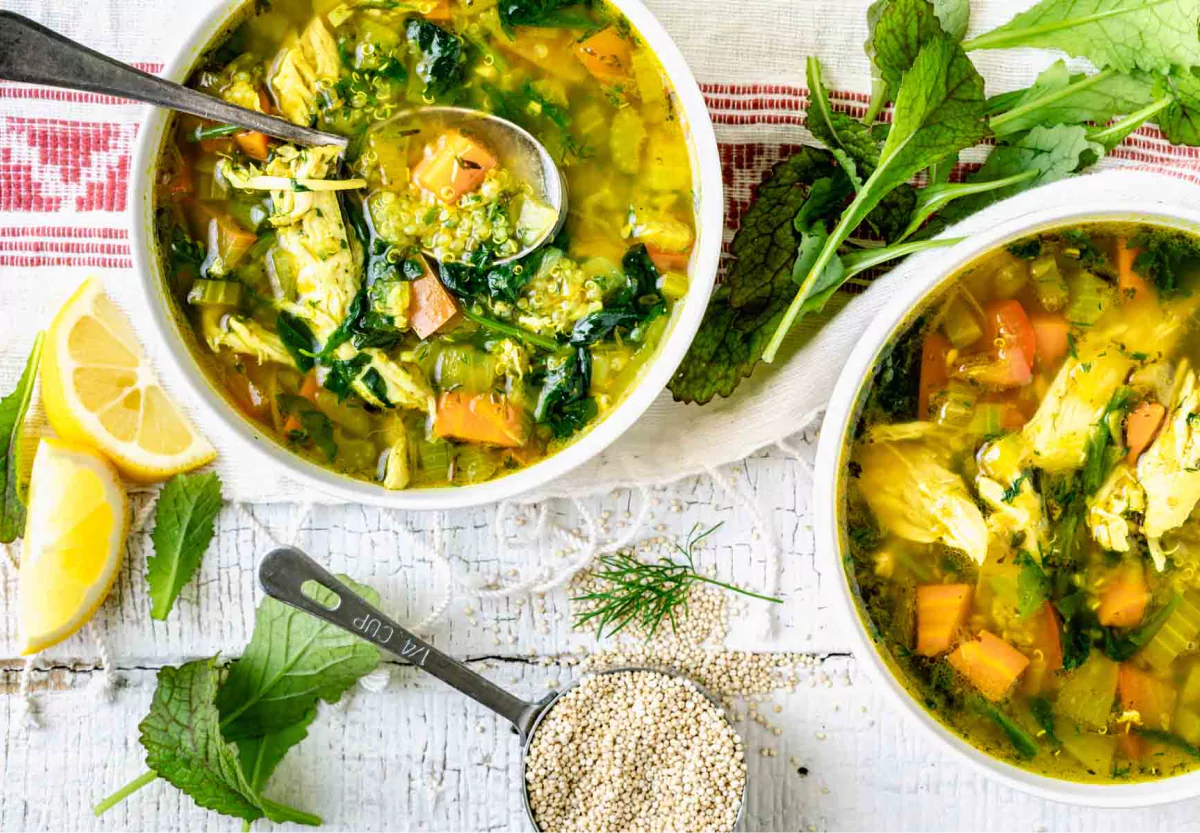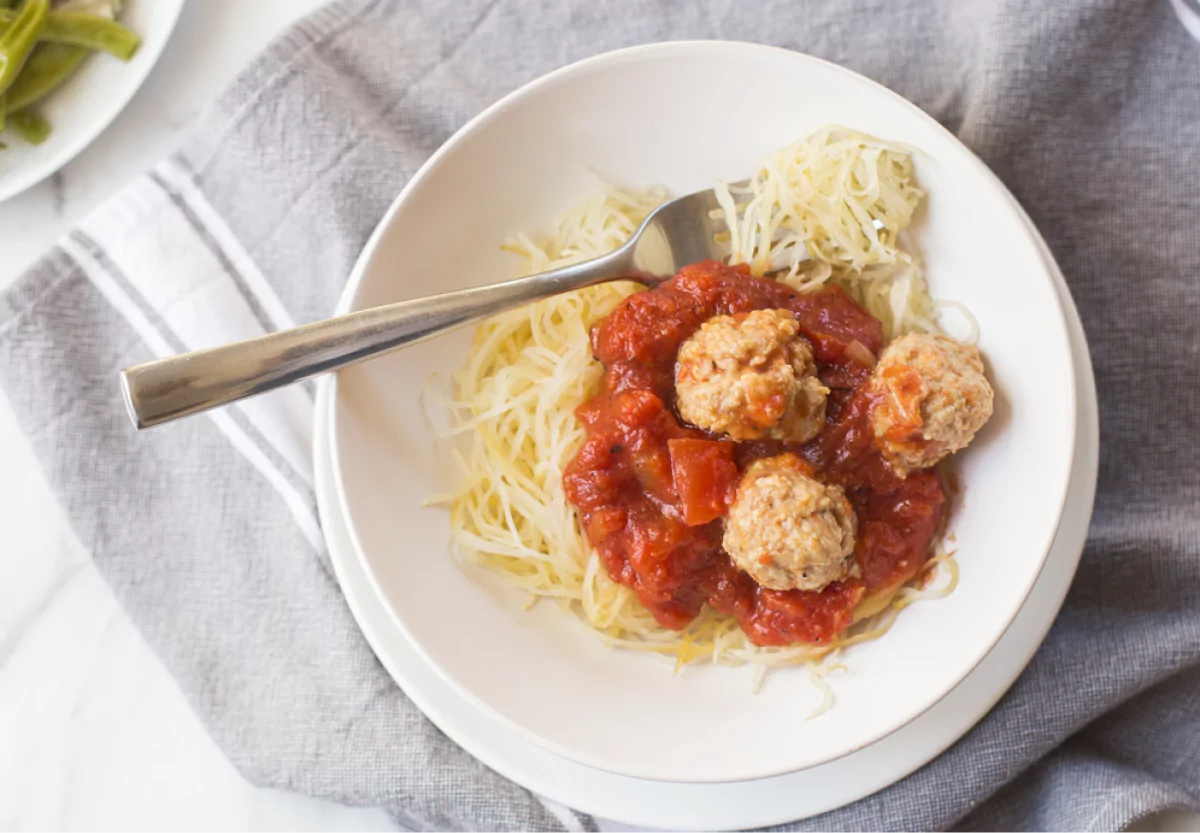Nutritionist-Recommended High Protein Recipes

Key Takeways
Eating enough protein is important for many aspects of your health. Protein can support building muscle, bone strength, healthy weight management, brain function, hormonal balance, and even glycemic control. But for some people, getting the recommended amount of protein can be challenging.
If you’re in need of some high-protein meal ideas, the Nutrisense nutrition team is here to help! In this article, we’ll share a list of some of the best sources of protein, plus six nutritionist-approved high protein recipes to help you add more protein to your diet.
How Much Protein Do You Need Per Day?
The recommended protein intake can vary depending on a number of factors, including sex, age, weight, and activity levels. When it comes to adequate protein consumption for you and your health needs, here’s what the research recommends:
- Sedentary adults under the age of 65, with no injuries or illnesses should aim to consume 0.8 grams of protein per kilogram of body weight.
- Active adults under the age of 65 with no injuries or illnesses should be consuming 1.0-2.0 grams of protein per kilogram of body weight.
- Adults over the age of 65 should be consuming 1.2 to 2.0 grams of protein per kilogram of body weight, whether they are sedentary or active.
Be sure to discuss the correct amount of protein and other macronutrients to add to your diet by consulting a qualified nutritionist or registered dietitian. They can help you determine how much protein you should be consuming for your individual needs.
What Are Good High Protein Foods to Eat?

You may be wondering how much protein is in the foods you eat, and how you can make sure you’re getting the right amount in your diet. Luckily, there are plenty of creative ways to boost your protein intake. Here are some protein-packed foods to add to your shopping cart:
- Lean cuts of red meat
- Turkey
- Chicken
- Eggs
- Lentils, chickpeas, and black beans
- Greek yogurt
- Cottage cheese
- Soy products like tofu and tempeh
Six Nutritionist-Recommended High Protein Meals
To put it all together, here are six nutritionist-approved high protein recipes that are not only delicious, but also full of important nutrients. Try these healthy recipes out separately or combine them into one meal plan.
1) Sweet Potato Shepherd’s Pie by The Real Food Dietitians

Recommended by Marie Funk, MS, RD, LDN
Here's an easy recipe that packs protein which is imperative for muscle growth! Muscle growth is regulated by metabolism. By supporting your metabolism through adequate protein, various micronutrients, and healthy fats, you also support a healthy muscle building process.
Ingredients
- Ground beef (or substitute with ground lamb, bison, turkey, or legumes)
- Carrots
- Green pepper
- Yellow or white onion
- Mushrooms
- 2 cloves of garlic
- 1 teaspoon chili powder
- 1 teaspoon dried rosemary
- 6 tablespoons tomato paste
- 3-4 sweet potatoes
- A few teaspoons butter or olive oil
2) Vegetarian Breakfast Casserole by Well Plated

Recommended by Victoria Eaton, RDN, LDN, IFNCP
Victoria is a big fan of a veggie and protein breakfast like this. This meal is high in protein, and contains a variety of blood-glucose balancing foods. It’s as tasty as it is nutritious!
Ingredients
- 2-3 sweet potatoes
- Mushrooms
- Broccoli
- Red bell pepper
- Onion
- 4-6 eggs
- 2% milk (or almond milk)
- Italian seasoning
- Ricotta or feta cheese
- Fresh herbs such as basil, thyme or parsley
3) Salmon and Avocado Salad by EatingWell

Recommended by Amanda Donahue, MS, RD, CD
To support recovery and muscle growth after a hard workout, Amanda likes this recipe which is rich in antioxidants and anti-inflammatory foods. It makes for a great weeknight high-protein dinner option and is full of delicious flavors!
And if you don't like salmon, she recommends swapping the fish with your favorite lean protein source (such as ground turkey or even a plant-based option). Bonus points for the vinegar included with the dressing to help mitigate glucose spikes.
Ingredients
- ½ cup loosely packed fresh dill, plus more for garnish
- 2 tablespoons water
- 2 tablespoons lemon juice
- 2 tablespoons white-wine vinegar
- 1 teaspoon Dijon mustard
- 1 small clove garlic
- 2 avocados, chopped, divided
- ¼ cup extra-virgin olive oil, plus 1 teaspoon, divided
- ½ teaspoon salt, divided
- 4 (5 ounce) skinless salmon filets
- ¼ teaspoon ground pepper
- 3 cups spring mix salad greens
- 2 cups thinly sliced red cabbage
- 1 cup matchstick carrots
4) Low Carb Keto Fish Tacos by Sugar Free Londoner

Recommended by Heather Davis, MS, RDN, LDN
You can't go wrong with protein-rich options that pack essential fatty acids and a broad range of micronutrients! This Mexican-inspired recipe happens to be lower carb, but you can easily swap in a carb-containing gluten-free tortilla option if you want some more carbs on board.
Ingredients
For the salmon:
- 3 salmon filets or a white fish such as cod or flounder
- 2 tablespoons olive oil
- Juice of ½ lime
- ½ teaspoons paprika powder
- ½ teaspoons mild chili powder
- ½ teaspoons garlic powder
- Salt and pepper to taste
For the tacos:
- 1 batch spiced coconut flour tortillas
For the slaw:
- 1 avocado diced
- ½ cup red cabbage shredded
- 1 cup white cabbage shredded
- 1 tbsp coriander chopped
- 2 spring onions / scallions chopped
For the salsa dressing:
- 1 tablespoon olive oil
- 3 tablespoon coriander chopped
- 1 garlic clove minced
- Juice of ½ lime
- ⅓ cup Greek yogurt or sour cream
- ½ jalapeño or to taste
- Pinch salt + pepper
5) Lemon and Dill Quinoa Chicken Soup by Healthy Seasonal Recipes

Recommended by Jordyn Wallerius, MS, RDN, CD
Jordyn loves this lemon and dill quinoa chicken soup as a more glucose-friendly version to regular chicken noodle soup. This fun comfort food chicken recipe is easy to customize—if you’re not a fan of quinoa, you can swap it out for brown rice. You can even add in any extra veggies of choice!
Ingredients
- 2 tablespoons extra-virgin olive oil
- 3 cloves garlic, minced
- 1 large yellow onion, diced
- 1 cup diced carrot
- 1 teaspoon salt
- 1 teaspoon ground turmeric
- 8 cups reduced-sodium chicken broth
- 1 red bell pepper diced
- ½ cup diced celery
- 2 teaspoons herbs de Provence or Italian seasoning
- 1 pound boneless skinless chicken breast
- ½ cup rinsed quinoa
- 2 cups chopped mustard greens or baby spinach
- ½ teaspoon lemon zest
- 1 tablespoon lemon juice
- 3 tablespoons chopped fresh dill
6) Spaghetti Squash and Meatballs by Food Network

Recommended by Patrick Scheel, RDN, LDN
This pasta recipe is a great high protein take on traditional spaghetti and meatballs. Patrick explains, “You get that feeling of fullness from the high protein content, but without the potential glucose crash afterwards from your typical plate full of pasta.”
Ingredients
- 1 medium spaghetti squash (about 2 pounds)
- Kosher salt
- 3 tablespoons extra-virgin olive oil
- 2 stalks celery, chopped
- 1 medium carrot, roughly chopped
- 1 medium onion, roughly chopped
- 6 cloves garlic
- 1 cup fresh parsley leaves
- 1 pound ground beef
- 1 pound ground pork
- 2 large eggs
- 1 cup Italian-style breadcrumbs
- 1 cup plus 3 tablespoons grated parmesan cheese
- 2 28-ounce cans tomato puree
- 2 large sprigs basil
- 1 teaspoon dried oregano
Find the right Nutrisense programto turn insight into progress.
Go Beyond Glucose Data with Nutrisense
Your glucose can significantly impact how your body feels and functions. That’s why stable levels are an important factor in supporting overall wellbeing. But viewing glucose isn't enough. Nutrisense, you’ll be able to learn how to use your body's data to make informed lifestyle choices that support healthy living.
One-to-one coaching
Sign up to access insurance-covered video calls to work with a glucose expert: a personal registered dietitian or certified nutritionist who will help tailor your lifestyle and diet to your goals.
Monitor and measure what matters
With the Nutrisense CGM Program, you can monitor your glucose with health tech like glucose biosensors and continuous glucose monitor (CGM)s, and analyze the trends over time with the Nutrisense App. This will help you make the most informed choices about the foods you consume and their impact on your health.
Find your best fit
Ready to take the first step? Start with our quiz to find the right Nutrisense program to help you take control.

Heather is a Registered and Licensed Dietitian Nutritionist (RDN, LDN), subject matter expert, and technical writer, with a master's degree in nutrition science from Bastyr University. She has a specialty in neuroendocrinology and has been working in the field of nutrition—including nutrition research, education, medical writing, and clinical integrative and functional nutrition—for over 15 years.



.webp)
